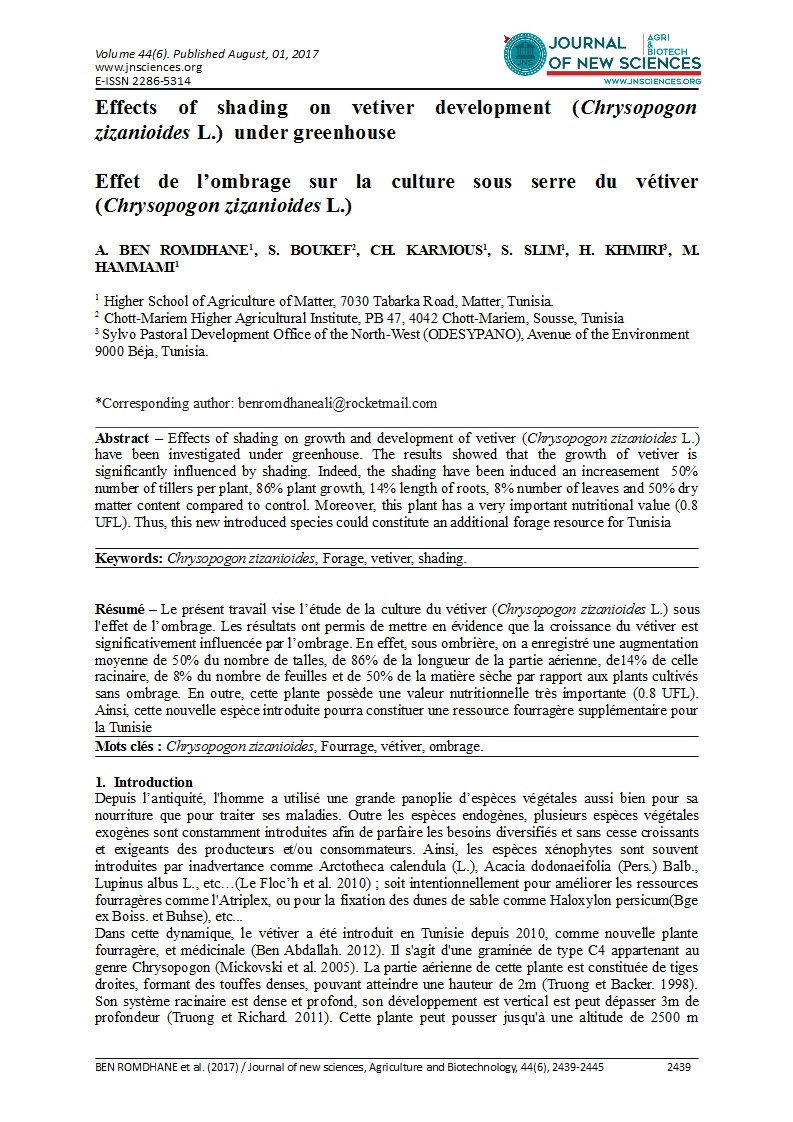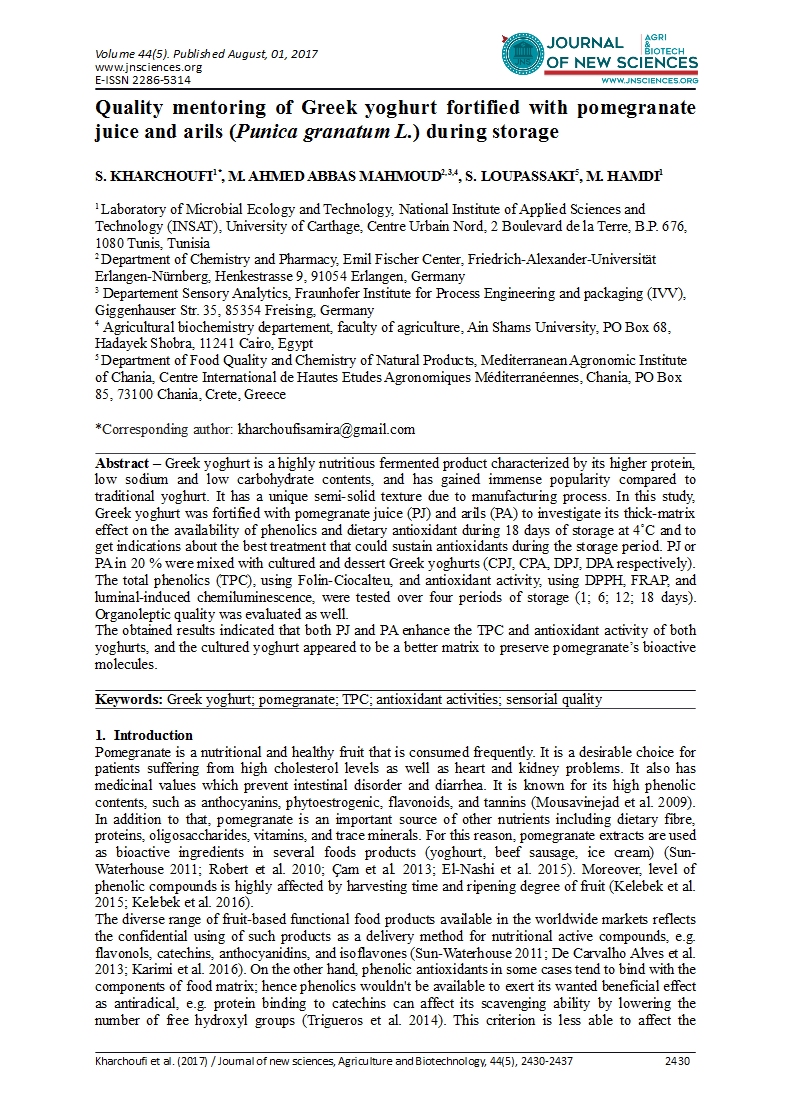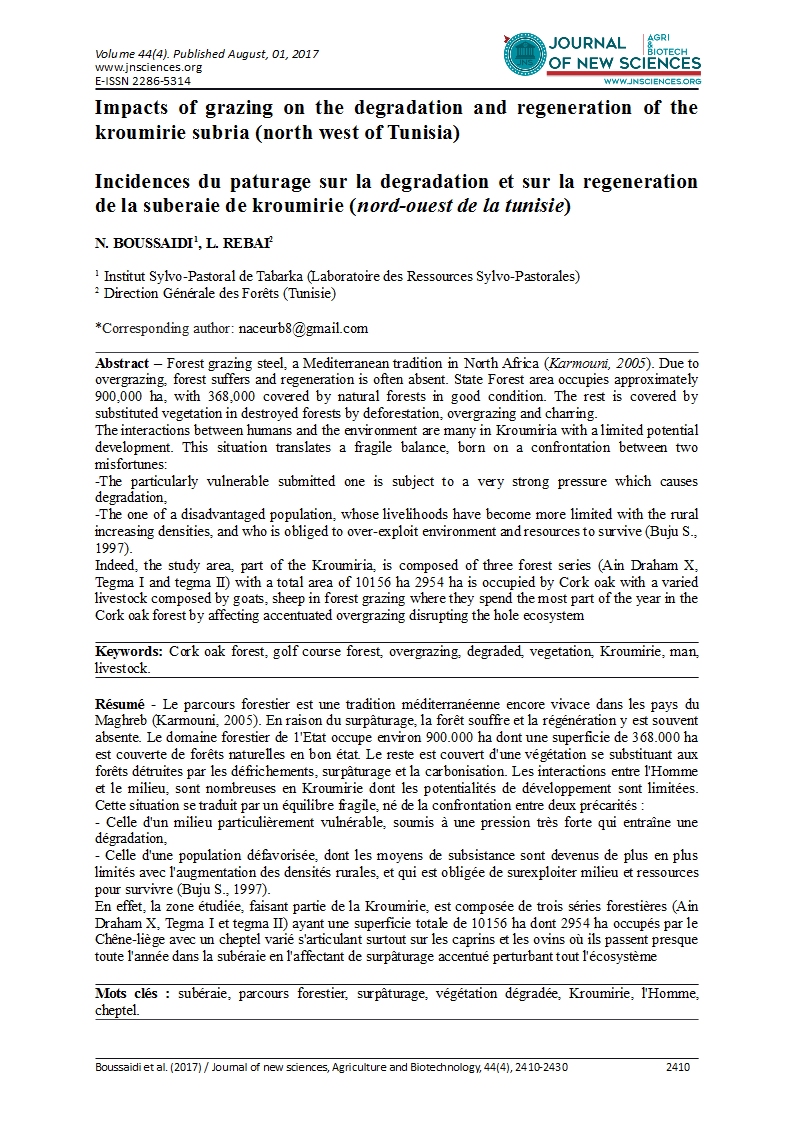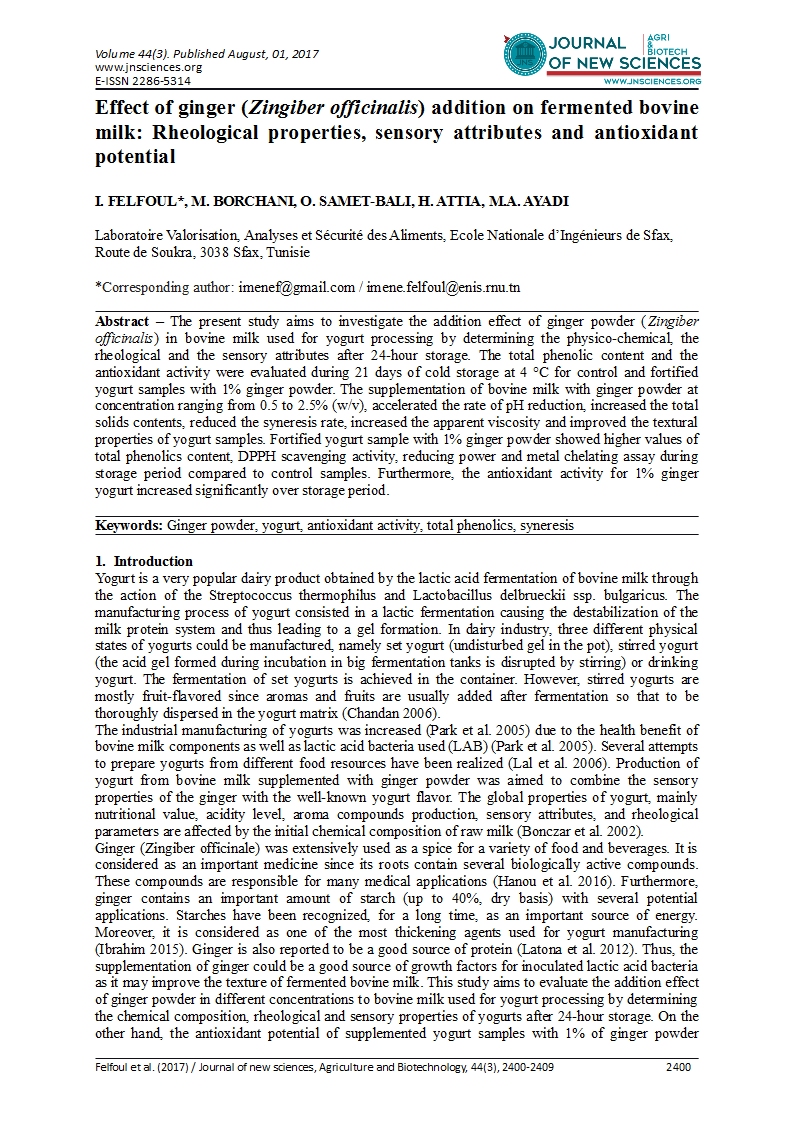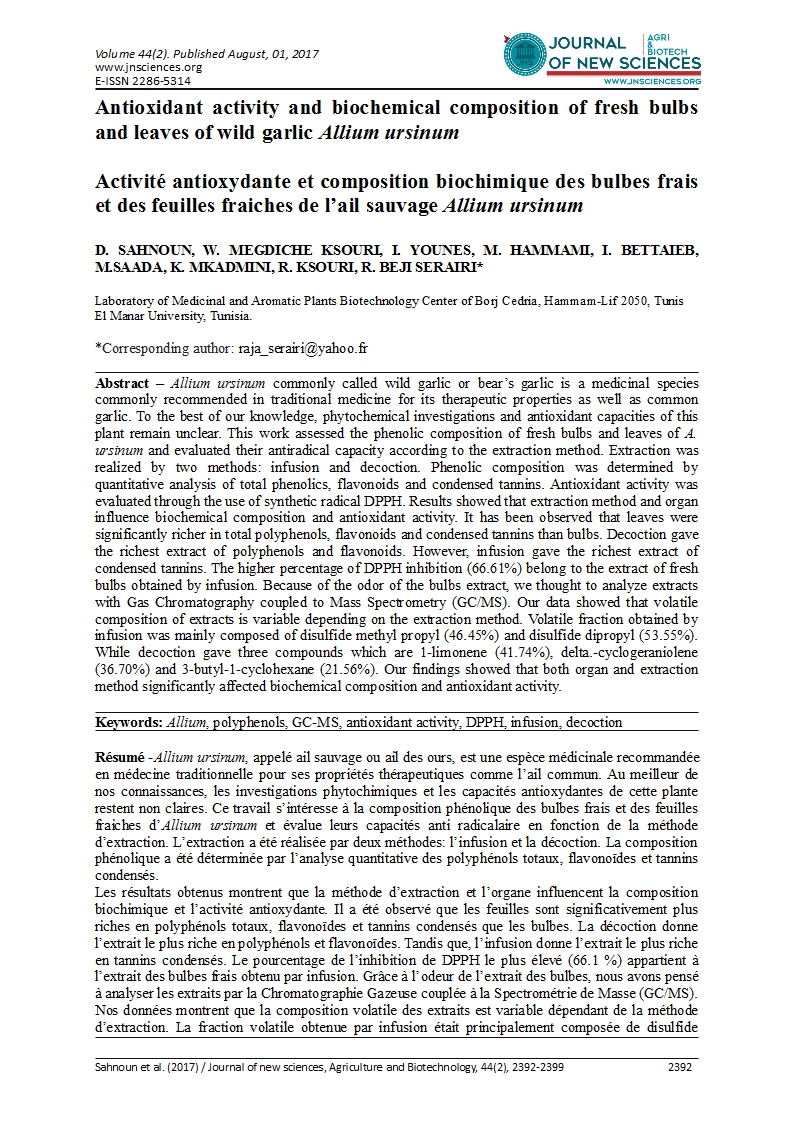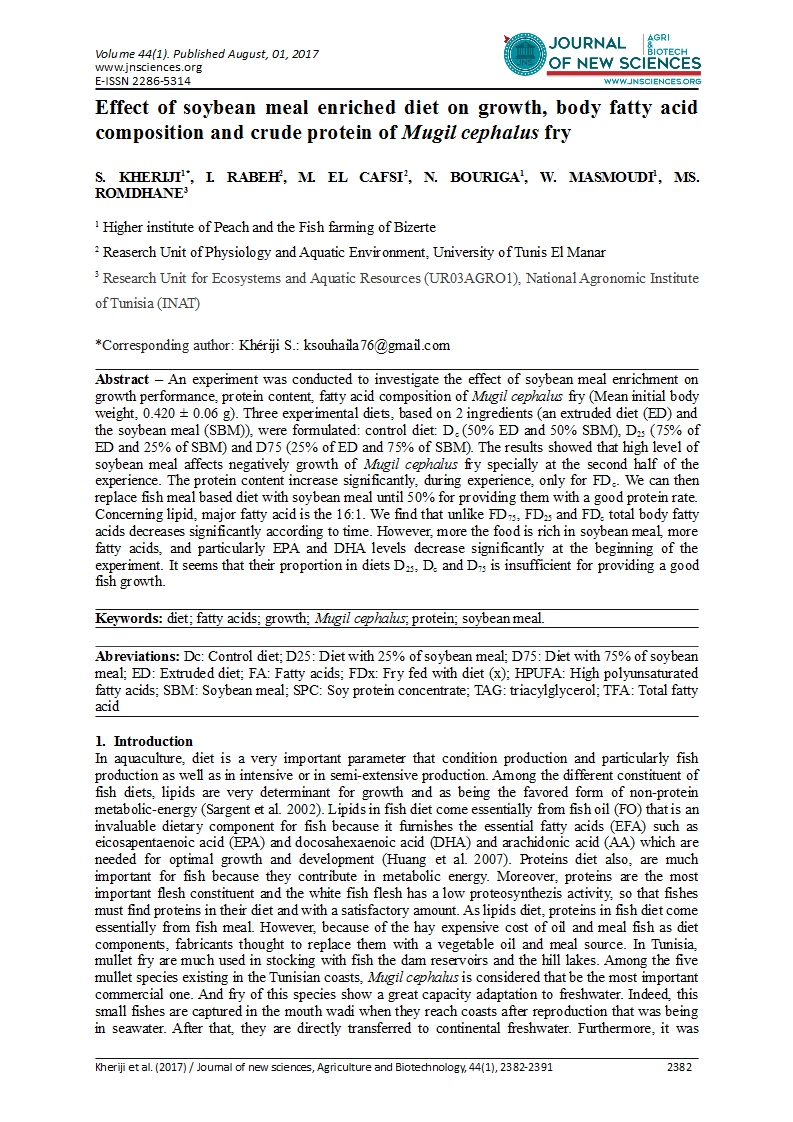- Category: Volume 44
- Hits: 5847
Improved gross margin generated by the use of the new barley variety "Imen" selected for its resistance to Barley yellow dwarf virus (BYDV)
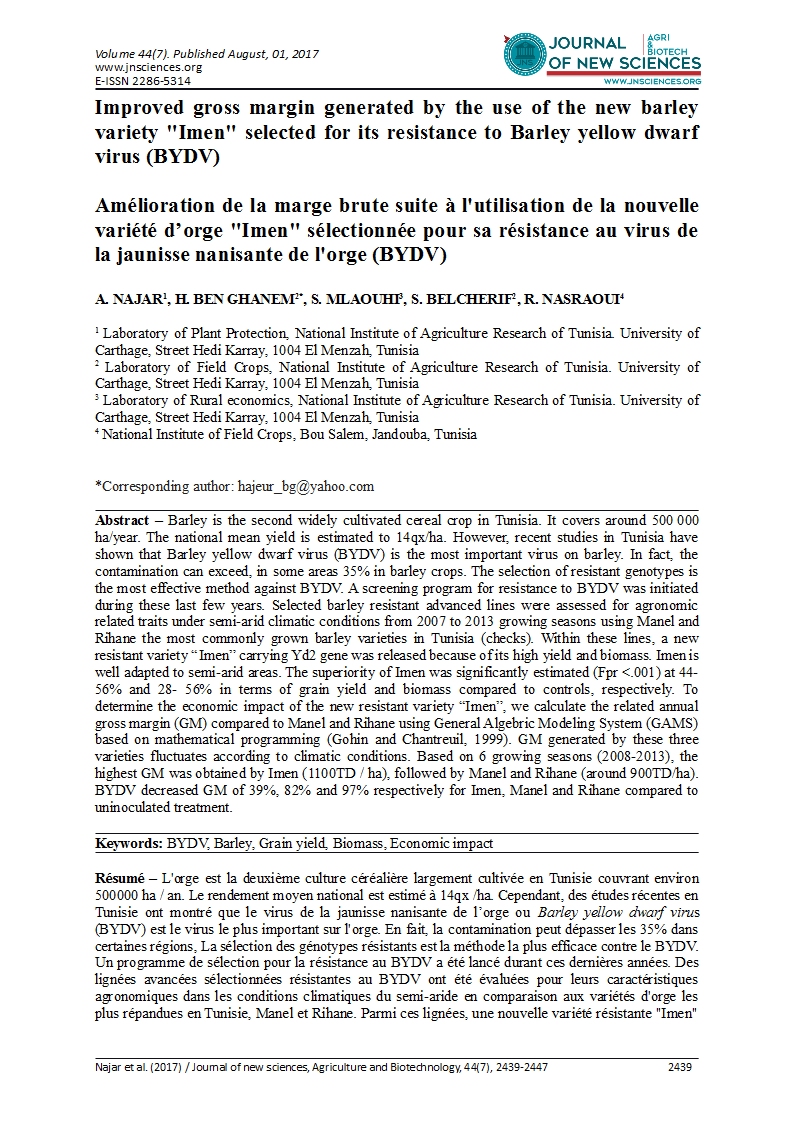
Amélioration de la marge brute suite à l'utilisation de la nouvelle variété d’orge "Imen" sélectionnée pour sa résistance au virus de la jaunisse nanisante de l'orge (BYDV)
A. NAJAR1,
H. BEN GHANEM2*,
S. MLAOUHI3,
S. BELCHERIF2,
R. NASRAOUI4
1 Laboratory of Plant Protection, National Institute of Agriculture Research of Tunisia. University of Carthage, Street Hedi Karray, 1004 El Menzah, Tunisia
2 Laboratory of Field Crops, National Institute of Agriculture Research of Tunisia. University of Carthage, Street Hedi Karray, 1004 El Menzah, Tunisia
3 Laboratory of Rural economics, National Institute of Agriculture Research of Tunisia. University of Carthage, Street Hedi Karray, 1004 El Menzah, Tunisia
4 National Institute of Field Crops, Bou Salem, Jandouba, Tunisia
Abstract – Barley is the second widely cultivated cereal crop in Tunisia. It covers around 500 000 ha/year. The national mean yield is estimated to 14qx/ha. However, recent studies in Tunisia have shown that Barley yellow dwarf virus (BYDV) is the most important virus on barley. In fact, the contamination can exceed, in some areas 35% in barley crops. The selection of resistant genotypes is the most effective method against BYDV. A screening program for resistance to BYDV was initiated during these last few years. Selected barley resistant advanced lines were assessed for agronomic related traits under semi-arid climatic conditions from 2007 to 2013 growing seasons using Manel and Rihane the most commonly grown barley varieties in Tunisia (checks). Within these lines, a new resistant variety “Imen” carrying Yd2 gene was released because of its high yield and biomass. Imen is well adapted to semi-arid areas. The superiority of Imen was significantly estimated (Fpr <.001) at 44-56% and 28- 56% in terms of grain yield and biomass compared to controls, respectively. To determine the economic impact of the new resistant variety “Imen”, we calculate the related annual gross margin (GM) compared to Manel and Rihane using General Algebric Modeling System (GAMS) based on mathematical programming (Gohin and Chantreuil, 1999). GM generated by these three varieties fluctuates according to climatic conditions. Based on 6 growing seasons (2008-2013), the highest GM was obtained by Imen (1100TD / ha), followed by Manel and Rihane (around 900TD/ha). BYDV decreased GM of 39%, 82% and 97% respectively for Imen, Manel and Rihane compared to uninoculated treatment.
Keywords: BYDV, Barley, Grain yield, Biomass, Economic impact
Résumé – L'orge est la deuxième culture céréalière largement cultivée en Tunisie couvrant environ 500000 ha / an. Le rendement moyen national est estimé à 14qx /ha. Cependant, des études récentes en Tunisie ont montré que le virus de la jaunisse nanisante de l’orge ou Barley yellow dwarf virus (BYDV) est le virus le plus important sur l'orge. En fait, la contamination peut dépasser les 35% dans certaines régions, La sélection des génotypes résistants est la méthode la plus efficace contre le BYDV. Un programme de sélection pour la résistance au BYDV a été lancé durant ces dernières années. Des lignées avancées sélectionnées résistantes au BYDV ont été évaluées pour leurs caractéristiques agronomiques dans les conditions climatiques du semi-aride en comparaison aux variétés d'orge les plus répandues en Tunisie, Manel et Rihane. Parmi ces lignées, une nouvelle variété résistante "Imen" portant le gène de résistance Yd2 a été inscrite au catalogue officiel des nouvelles obtentions végétales.
Sous conditions d’inoculation artificielle, la variété Imen a dépassé les variétés témoins Manel et Rihane de respectivement 44 et 56% pour le rendement en grains et 28 et 56% pour la biomasse. L'impact économique de cette nouvelle variété a été évalué à partir de la marge brute générée (MB) par comparaison aux témoins en utilisant le modèle économique (General Algebraic Modeling System)"GAMS" basé sur la programmation mathématique (Gohin et Chantreuil, 1999). Sur la base de 6 campagnes agricoles (2008-2013), la MB moyenne la plus élevée a été produite par Imen (1100TD / ha), suivi de Manel et Rihane (environ 900TD / ha). L'infection par le virus a entrainé une diminution de ce paramètre de 39%, 82% et 97% respectivement pour Imen, Manel et Rihane.
Mots clés : BYDV, Orge, Rendement en grains, Biomass, Impact économique

